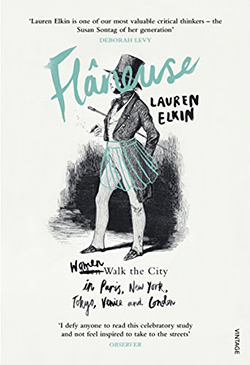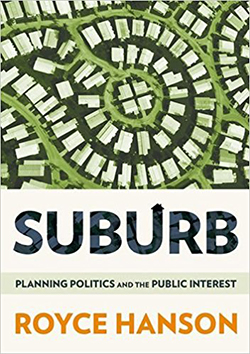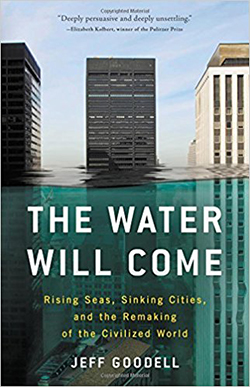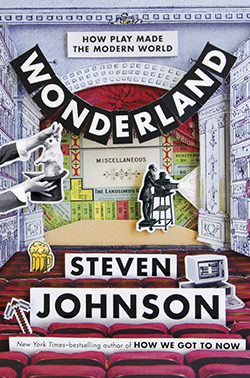Planetizen is pleased to release its list of the best books published in 2017 on the subjects of planning, design, and development.

To devout readers of Planetizen's annual list of Top Books, we apologize. We have finally pulled the lever on a change we have been intending to make for some time now. Your eyes do not deceive: this is the second Top Books list with 2017 in the title. Here we begin the practice of listing the year from which these books have emerged. This year, like those that came before, must be remembered specifically, and studied thoroughly.
We hope we selected a list of books both timely to the current situation and essential to the longer history of planning. These authors have chosen a variety of approaches to their subject matter, each uniquely insistent on being explored, prodded, and questioned, this year and in the future. There are books on matters of race and gender here, two of the dominant themes from the year, along with some of the deepest examinations of the consequences of planning decisions to emerge in recent years. Perhaps 2017 will be the year we decide not to let some mistakes from history repeat themselves.
Planetizen's Top Ten Books of 2017
 Atlas Obscura
Atlas Obscura
Joshua Foer, Dylan Thuras, Ella Morton
Workman Publishing Company
September 20, 2017, 480 pages
Based on the popular blog of the same name, Atlas Obscura features places that no urban planer would ever design. And that's the point. The precision and rationality of planning—not to mention the bureaucracy—is no match for Slab City (California), The Cathedral of Junk (Austin, Tex.), Stiltsville (Miami), and Pearl Fryar’s Topiary Garden (S. Carolina)—to name just a few in the United States. Or, rather, they're places where planning went awry, like California City, the Cincinnati Subway, or Dead Horse Bay (Brooklyn). Atlas Obscura is a global romp, though both cities and non-cities, identifying the weird, offbeat, and unexpected features of the built environment, from castles to museums to archeological sites and natural wonders. It is an unapologetically joyous project.
For planners, it provide a foil for their more mundane work. That's not to devalue the work but rather to remind us that places that are all right are not the same thing as places that are special—and that places that are special come about organically or by forces well beyond planners' control. It also reminds planners that they shouldn't necessarily plan too carefully or too rigidly. Even if they can't create the oddities that Atlas Obscura describes, they should at least leave enough freedom in their plans for the human spirit to romp around a little.
Bike Boom: The Unexpected Resurgence of Cycling
Carlton Reid
Island Press
June 15, 2017, 246 Pages
Rumors of an all-powerful bike lobby waging an unrelenting war on cars have haunted mainstream media's editorial pages and local government comment periods for years now. In reality, bike advocates have made only incremental progress in the pursuit of spatial justice, though there are a few stories of giant leaps of progress made for bikes and bike kind to choose from in the annals of global history. It's the project of Carlton Reid with his newest book, Bike Boom, to share lessons from the ongoing history of bike advocacy, and bike opposition, around the world.
Reid's location in United Kingdom offers an international perch for this survey, which examines case studies from England, the Netherlands, Denmark, Canada, and several locations in the United States. The U.S. stops include Davis, California, which the book describes as the "Bicycle Capital of America." The big ticket item with Bike Boom is the story of the unprecedented boom in cycling's popularity that took place in the United States and the United Kingdom in the first half of the 1970s. Were it not for Reid's work in reviving this chapter of transportation history, past waves of bike sales and media attention lavished on the bike community might be forever lost to the Critical Mass-riding and Streetsblog-reading types, currently pushing bike advocacy toward new methods and renewed success. Bike Boom offers a historical record to inspire and inform the contemporary wave of bike enthusiasm—that it might persist a little longer this time around.
For media on Carlton Reid's work on Bike Boom, see The Guardian, Curbed, the Bike Boom blog and the Bike Boom Kickstarter.
 The Color of Law: The Forgotten History of How Our Government Segregated America
The Color of Law: The Forgotten History of How Our Government Segregated America
Richard Rothstein
Liveright
May 2, 2017, 368 pages
As author Richard Rothstein describes, not long after moving into their new suburban home, Bill Myers faced a crowd of 300 white faces not-so-politely asking them to vacate the neighborhood. Protests persisted, led by KKK members and ignore by police. After four years, Myers complied.
This happened in 1961, not 1860. And it happened in suburban Philadelphia, not Birmingham or Jackson. Plenty of those neighbors are probably still alive. And still voting.
Urban planners do not necessarily bear the greatest responsibility for America's fervor for segregation. In fact, Rothstein rarely, if ever, refers to them directly. But they surely bear some of it. That's because, right up to the 1960s, cities, suburbs, and financial institutions across the United States employed every legal and quasi-legal means possible to keep whites and blacks as segregated as if if they were living on different continents. This of course includes zoning. It was, in fact, the raison d’être of many towns.
We're all abstractly familiar with the practices of redlining, discriminatory lending, and so forth, but those buzzwords are just the beginning. As Rothstein lays out, segregation was a decentralized but deliberate, de facto effort that involved governments, courts, the real estate industry, and everyday citizens alike. The effects—on African-Americans individually and on our cities and society generally—were and are devastating.
Rothstein's book is important, but it's still flawed. Some chapters are cursory. He relies too much on isolated anecdotes, and not enough on data, to make assertions about nationwide trends. But the point should be well taken by planners: whatever role they played in writing discriminatory zoning laws and helping banks cordon off neighbors, contemporary planners—and all compassionate Americans—should dedicate themselves to righting the wrongs that Rothstein ably chronicles.
 Flâneuse: Women Walk the City in Paris, New York, Tokyo, Venice, and London
Flâneuse: Women Walk the City in Paris, New York, Tokyo, Venice, and London
Lauren Elkin
Farrar, Straus and Giroux
February 28, 2017, 336 pages
English being a mostly non-gendered language, we tend not to think of "walking" and "walkers" as male, female, or otherwise. But French is another matter, and it was the French who turned walking from a utilitarian mode of transportation to an activity in its own right. Charles Baudeliaire popularized the delights of strolling around Paris, and successors like Walter Benjamin (a German) followed his lead. They were all flaneurs—masculine. Until now.
If ever there were an un-gendered activity, you'd think it would be walking. But, this being the real world, it's just not so. Lauren Elkin's Flâneuse is a pointed yet joyous attempt to claim the art of urban walking for the female gender. Elkin is not an urban planner, nor does she make prescriptions about planning. She is very much a writer, drawing on artists and scholars ranging from Jean Rhys, Virginia Woolf, George Sand, Sofia Coppola, and Joan Didion to illustrate her first-person accounts of strolling through, respectively, Paris, London, Paris again, Tokyo, and New York—each of which get their own chapter. She also throws in un-walkable Long Island for good measure. Elkin does not directly rail against gender disparities in cities until her very brief conclusion nor does she dwell on unseemliness and indignities that women suffer can suffer in cities. But, in the broad sweep of Flâneuse, she makes it abundantly clear that women deserve welcoming sidewalks and intricate streetscapes just as much as men do.
 Imaginary Cities: A Tour of Dream Cities, Nightmare Cities, and Everywhere In Between
Imaginary Cities: A Tour of Dream Cities, Nightmare Cities, and Everywhere In Between
Darran Anderson
The University of Chicago Press
April 6, 2017, 576 Pages
The University of Chicago Press brought Darran Anderson's book stateside after its initial publication in 2015 by Influx Press in the U.K. Imaginary Cities is rare for the connections it builds between an incredible variety of disciplines. Each chapter weaves a kind of prose poem that travels from each corner of the world and through every epoch of history. One chapter's aside is the next chapter's protagonist, as Anderson exposes the wildest fantasies of historic figures as varied as Marco Polo, Samuel Taylor Coleridge, and Le Corbusier. In each corner of this tale, we find impossible mirror versions of cities, and lessons they reveal about the people and the world that dreamed them up.
The book offers an extremely erudite collection of fancy and whimsy. It calls to mind a cabinet of curiosities—a collection of unclassifiable relevance and dubious veracity. Any one who has ever walked through the doors of the Museum of Jurassic Technology in Los Angeles is familiar with the concept. Anderson has recognized, and thankfully shared, the potential of such a collection to illustrate the revelatory scale of the human imagination.
 The New Urban Crisis: How Our Cities Are Increasing Inequality, Deepening Segregation, and Failing the Middle Class—and What We Can Do About It
The New Urban Crisis: How Our Cities Are Increasing Inequality, Deepening Segregation, and Failing the Middle Class—and What We Can Do About It
Richard Florida
Basic Books
April 11, 2017, 336 pages
Divisive though he may be, Richard Florida deserves due credit for popularizing many current planning trends. This year, in the New Urban Crisis, Florida finally acknowledged a trend that most people wish was far less popular—inequity within cities and among cities. Florida focuses on the "superstar cities" that have made it big, and on the rest, which have been left behind. And he acknowledges that economic success for many city-dwellers—the proverbial hipsters and one-percenters—has been countered by housing shortages, blight, and crushing costs of living for many of their neighbors.
Florida defines these intra-urban problems as inequality, segregation, and sorting. He offers a slew of data to describe these patterns, some of it almost comical in its precision. He offers data sets to rank cities according to different types of segregation: Segregation of the Wealthy; Segregation of the Less Educated; Segregation of College Grads; Educational Segregation; Creative Class Segregation; Service Class Segregation, etc.
The New Urban Crisis lacks much of the dazzle that characterizes Florida's earlier work—he's like a Taylor Swift fan who just discovered Morrissey. Previously, Florida presaged, and encouraged, ebullient trends that hadn't happened yet. This time, he's describing depressing things of which many urbanites are all too aware. Whether Florida should have been aware of them—ahead of time—is the question that hangs over the book. Indeed, it's a question that all of us should be asking ourselves.
 No Small Plans
No Small Plans
Gabrielle Lyon, Devin Mawdsley, Kayce Bayer, Chris Lin, Deon Reed
Chicago Architecture Foundation
July 2017, 144 pages
The Chicago Architecture Foundation (CAF) produced and published No Small Plans as an ambitious and successful experiment in civic engagement. In partnership with Chicago Public Schools and the Chicago Public Library, CAF aspires to distribute 30,000 copies of No Small Plans for free to Chicago teens in the next three years, funded with the aid of a Kickstarter campaign and every purchase of the book.
No Small Plans is a graphic novel that aims to become a new version of the 1911 textbook called Wacker's Manual, which explained the concepts and goals of the 1909 Plan of Chicago to a previous generation. In No Small Plans, three generations of Chicago teens, living in the past, present, and future, navigate Chicago and describe how the city encourages or discourages their dreams and ambitions. Following each chapter, an interlude features Daniel Burnham, the force behind the 1909 Plan of Chicago and the origin of the famous quote that gives the graphic novel its name.
No Small Plans is more than just a worthy cause—more so it's a thoughtfully executed experiment in engagement with younger generations that might not be familiar with the practices of planning. The stories are readable and accessible, with a diverse cast of characters that reflect their audience. The characters also make their most of their opportunity to celebrate and ponder the city. Here's hoping the Chicago youth who read No Small Plans will find their own unique voice in doing the same.
 Suburb: Planning Politics and the Public Interest
Suburb: Planning Politics and the Public Interest
Royce Hanson
Cornell University Press
June 6, 2017, 329 pages
Suburb provides a detailed and deeply researched history of planning, suburban planning, no less, and still manages to be engaging and essential. Throughout the book, Royce Hanson gives careful and non-judgmental treatment to concepts of suburban life that would otherwise take years of careful study to encounter and understand. It's easy to imagine this book as a textbook that sets foundational understanding of the politics and history of suburban planning. First and foremost, this is a planners' book, about planning. Few authors have been so daring to realize that the subject of planning can fill an entire book without giving into the enticements of more ostensibly sexy subject matter.
Hanson's case study, Montgomery County, Maryland, has provided a steady stream of planning news to the rest of the nation (sometimes for lessons in what not to do) from its earlier inception up to the day of this writing. While Montgomery County has plenty of lessons to offer other suburban cities and communities around the country, part of the success of Hanson's book is not reducing Montgomery County to a caricature. Its history and its lessons are unique. If only more urbanists were capable of looking at suburban communities through the same lens.
 The Water Will Come: Rising Seas, Sinking Cities, and the Remaking of the Civilized World
The Water Will Come: Rising Seas, Sinking Cities, and the Remaking of the Civilized World
Jeff Goodell
Little, Brown and Company
October 24, 2017, 352 pages
Extreme Cities: The Peril and Promise of Urban Life in the Age of Climate Change
Ashley Dawson
Verso
October 17, 2017, 384 pages
If you've never envisioned it before, there is no more riveting thought experiment than imagining the inundation and expansion of the Black Sea—formerly Black Lake—when the Mediterranean Sea burst through the Bosporus some 7,000 years ago and rushed into the lake, some 300 feet below. That's when a certain emissary of God named Noah would have been around. In reality, geologists disagree over the height differential and extent of the flooding, but Goodell's point is well taken: sea-level rise is no joke. It's also no secret that we are headed for catastrophes of, if not Biblical, then at least monumental—Trumpian, perhaps—proportions. Goodell covers the latest science of sea level rise and discusses its potential impacts on low-lying places, including Miami, Venice, the Marshall Islands, New York City, Norfolk, and Lagos, among others. His prose is fun and lively—sometimes too lively—and his message clear: cities must prepare with as much enthusiasm as possible.

Far more political is Extreme Cities, which covers similar territory with more scholarship and less rhetorical glitter. For author Ashley Dawson, the development of coastal cities is an example of capitalism at its most reckless, and the failure of governments to mitigate and prepare for sea level rise exemplifies public policy as its most lethargic. Dawson focuses on his native New York City, where he is a professor at CCNY, and points to the degradation of Jamaica Bay and (like Goodell) the cautionary tale of Superstorm Sandy. Unapologetically left-wing, Dawson does not trust the corporate classes in the least and refers to "climate apartheid" to describe the inevitable uneven impacts of climate change. Unlike Goodell, Dawson directly enlists planners, writing in her conclusion, "socially just planning needs to be articulated."
Buy The Water Will Come.
Buy Extreme Cities.
 Wonderland: How Plan Made the Modern World
Wonderland: How Plan Made the Modern World
Steven Johnson
Riverhead Books
November 15, 2016, 336 pages
The premise of Wonderland is that delight, distraction, entertainment, and play are far more responsible for the modern world than anyone recognizes, historians included. Steven Johnson asks the question of why big changes happen in society, and repeatedly finds answers that do not reflect pragmatic concerns. From this line of thinking, Johnson traces a narrative that begins with the color or Roman cloaks, through the original commercial district in London, to the mall creations and failed socialist ambitions of Victor Gruen, to name dropping Jane Jacobs and Buckminster Fuller while examining Walt Disney's never-built vision for EPCOT.
Even when Johnson isn't explicitly discussing matters connected to the planning and design of places, which he frequently is, considerations of where are always essential to these stories of how. Johnson is a master storyteller, worthy of these delightful stories, and you'll likely enjoy reading this book as much as Johnson clearly enjoyed writing it.

Planetizen Federal Action Tracker
A weekly monitor of how Trump’s orders and actions are impacting planners and planning in America.

Chicago’s Ghost Rails
Just beneath the surface of the modern city lie the remnants of its expansive early 20th-century streetcar system.

Amtrak Cutting Jobs, Funding to High-Speed Rail
The agency plans to cut 10 percent of its workforce and has confirmed it will not fund new high-speed rail projects.

Ohio Forces Data Centers to Prepay for Power
Utilities are calling on states to hold data center operators responsible for new energy demands to prevent leaving consumers on the hook for their bills.

MARTA CEO Steps Down Amid Citizenship Concerns
MARTA’s board announced Thursday that its chief, who is from Canada, is resigning due to questions about his immigration status.

Silicon Valley ‘Bike Superhighway’ Awarded $14M State Grant
A Caltrans grant brings the 10-mile Central Bikeway project connecting Santa Clara and East San Jose closer to fruition.
Urban Design for Planners 1: Software Tools
This six-course series explores essential urban design concepts using open source software and equips planners with the tools they need to participate fully in the urban design process.
Planning for Universal Design
Learn the tools for implementing Universal Design in planning regulations.
Caltrans
City of Fort Worth
Mpact (founded as Rail~Volution)
City of Camden Redevelopment Agency
City of Astoria
City of Portland
City of Laramie






























